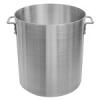Hi All,
I'm with a small dietary supplement manufacturer, making herbal supplements in the form of capsules, tinctures, and loose powders. Some of our products are blended, meaning we'll mix powdered herbs together based on a recipe (eg 50% Gingko 50% Gotu Kola). Some of our blended products have 5 or 6 different herbs mixed in different proportions. We're currently working through some labeling/composition testing compliance issues.
Our specification sheets and product "supplement facts" panel list that each capsule or serving contains a certain mg content of each ingredient. Currently, we arrived at this mg content through the "by input" method. This means that the mg content of each herb in the blend is not tested for after blending, rather it's calculated based on the ratio of ingredients in the bulk batch. For example, if 100lbs of Ginkgo Gotu Kola blend (50lbs of each herb) was encapsulated, each 500mg capsule is assumed to contain 250mg each of Ginkgo and Gotu Kola powder. This of course assumes that blending is homogenous. The FDA has been coming down on supplement companies over the past ~10 years about composition "by input", they would rather testing be done on the capsules themselves to quantify the actual mg content of each constituent.
This is where the problem starts: I can't seem to find any testing labs that can quantify the amount of herb in a blend. Detection (presence/absence) is easy enough, but that doesn't go far enough to actually very that the capsule contains what the label says it does. If these were vitamins they would be quantifiable through testing. But our ingredients are simply freeze-dried herbs milled into powder.
The best testing option that I've come across with a lab is to create an HPTLC reference profile for each of our blends to which subsequent lots can be compared to. So sure, we can send batches along as see that the HPTLC banding matches up, but how does this relate to mg content of each herb? We'd like to establish a spec range of mg content for each herbal constituent in the blend. How would we be able to tell if we were only slightly off on our herb blend based on HPTLC data? I doubt we'd be able to.
I'm almost considering filing for some kind of exemption with the FDA, based on the lack of scientifically valid methods for verifying the mg content of each herbal ingredient. But we're certainly not the only herbal supplement company out there, so a solution to this must exist. Anyone else in the herbal supplement business have any insight into this problem? Thank you for taking the time to read this long post!

















